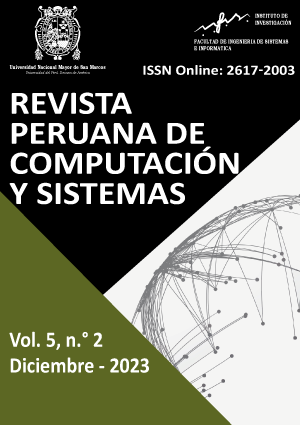Augmented reality, for the teaching-learning process of the chemistry course at the secondary level in the schools of Lambayeque
DOI:
https://doi.org/10.15381/rpcs.v5i2.27137Keywords:
Augmented reality, Teaching learning process, Chemistry course, Unity 3D, Vuforia SDKAbstract
The objective of this study is to optimize the teaching-learning process of the chemistry course at the secondary level in schools in Lambayeque through the use of augmented reality software. This study consisted of applying augmented reality software developed by myself, creating and using cards with augmented reality objects. In this software, students can take their chemistry course class and view each object on the sheet through the application. The evaluation of the software was carried out with the participation of 40 students from the 4th year of high school, each of them using a cell phone. A survey in the form of a questionnaire was used to evaluate the level of approval of the use of augmented reality software, which consisted of a Likert scale with five levels. Students completed these questionnaires to provide feedback and opinion on the usefulness and effectiveness of the software. As a result of this research, it can be concluded that the augmented reality software demonstrated good performance in detecting markers and displaying 3D objects.
Downloads
Published
Issue
Section
License
Copyright (c) 2023 Felipe Alejandro Vargas Zatta

This work is licensed under a Creative Commons Attribution 4.0 International License.
THE AUTHORS RETAIN THEIR RIGHTS:
(a) The authors retain their trademark and patent rights, and also over any process or procedure described in the article.
(b) The authors retain the right to share, copy, distribute, execute and publicly communicate the article published in the Revista Peruana de Computación y Sistemas (for example, place it in an institutional repository or publish it in a book), with acknowledgment of its initial publication in Revista Peruana de Computación y Sistemas.
(c) Authors retain the right to make a subsequent publication of their work, to use the article or any part of it (for example: a compilation of their work, lecture notes, thesis, or for a book), provided that they indicate the source. of publication (authors of the work, magazine, volume, number and date).



